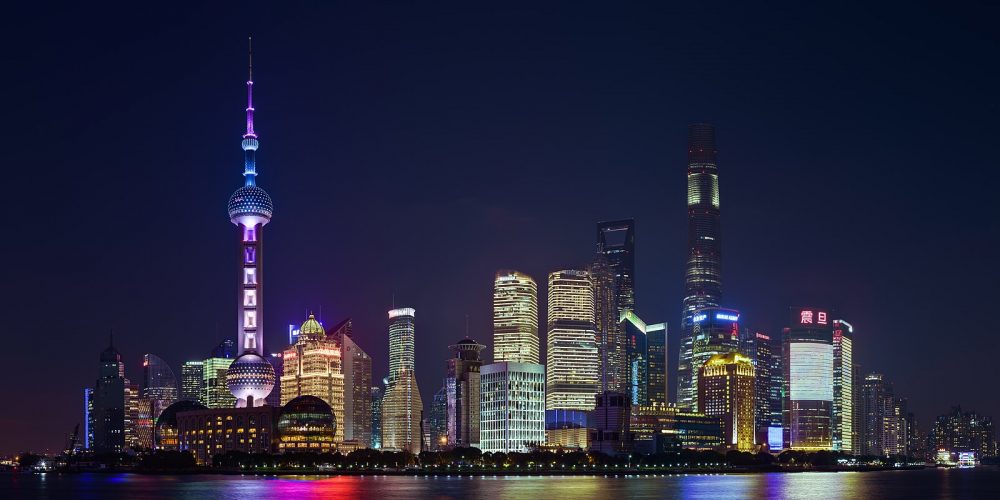How did China grow so rapidly?
How did a country once dubbed “the land of famine”, with a poverty rate of almost 90% in 1981, transform into the second-largest economy in the world, the world’s largest trading nation in goods, and a manufacturing powerhouse? China’s transformation from a poor agrarian society in the late 20th century to the world’s second-largest economy today can be viewed as a miracle. However, behind this “miracle” is a combination of critical economic policies and strategic investments into key sectors.
When the Communist Party was founded in China in 1949, the country’s economy was off to a slow start. The Great Leap Forward, launched by CCP Chairman Mao Zedong, was a campaign aimed at boosting the country’s economy by increasing grain production and industrial activity. Instead of springing China’s economy forward, it backfired and caused the largest famine in human history which killed an estimated 30 to 45 million people. Local officials overreported harvest production to avoid not meeting agricultural benchmarks, leading to the government seizing an excess of grain, and leaving the rural population with insufficient food. The failure revealed the inefficiency of strict central control, motivating later leaders to pursue gradual market liberalisation and decentralised decision-making. The famine was followed by the Cultural Revolution in the 1960s, a movement Mao initiated to eradicate his rivals and re-ignite the spirit of Communism. However, this resulted in lasting economic impacts and political unrest. For example, there is an education gap between generations, as many people were denied an education. There was also a decline in industrial and agricultural output, as a result of many skilled workers being sent to the countryside, which slowed down efficiency and output due to these people having no previous experience farming.
Deng Xiaoping guided the country towards what is known as the “Chinese economic miracle”
Due to this, the narrative often told, (especially outside of China), is that China began its journey towards prosperity after the beginning of Deng Xiaoping’s hallmark policy, Reform and Opening. Yet, this perspective overlooks the groundwork established, including the introduction of reform, redistribution, and investment in sectors such as public health, transportation, and literacy, which gave China a considerable lead in the game. After Mao died in 1976, Deng Xiaoping guided the country towards what is known as the “Chinese economic miracle”. He achieved this through a series of economic reforms, such as conferring the right to farm on peasants, thereby improving their quality of life and allowing foreign investment into the country, which contributed to improved US-China relations in 1979. Furthermore, China also adopted a dual-track strategy, where sectors such as steel, power, and transportation would be under government control, while granting the private market control over light industries, especially those with encouraging export prospects. This would then be expanded in phases as China’s economy adapted and gradually incorporated a market-based economy. German economist Isabella Weber asserts that this method prevented China’s economy from undergoing shock therapy, which refers to a set of reforms implemented simultaneously to transition an economy from a command to a market system. These gradual reforms allowed China to maintain stability as its economy grew rapidly.
Additionally, China’s economic success was accompanied by investment in human capital development, which helped lift 800 million people out of poverty. In 1986, China implemented the “Compulsory Education Law”, granting nine years of free education up to secondary school, as well as a 4% benchmark on education spending. These decisions led to a literacy rate of over 95% in 2020 and a more skilled and versatile workforce, which is a key competitive advantage. However, this statistic overlooks China’s low high school graduation rate of 36.6% in 2022. For those who do not complete a secondary education, China’s intense national examination system (Gaokao) can further limit them, as those who attend lower-tier institutions tend to earn 30 to 40 per cent less than their peers in more reputable institutions. The Gaokao’s prestige restricts the development of vocational schools, reducing the avenues in which young people could pursue beyond the traditional Gaokao route. Essentially, the status quo, seemingly meritocratic, maintains interregional inequality and hinders the development of China because the Gaokao benefits those living in major cities, as they have better access to resources and support.
Its biggest challenge will be the West’s perception that its products are a threat to national security.
In September 2023, Xi Jinping urged the country to focus on “new quality productive forces” to propel the economy further. This approach focuses on technology that needs large industrial and manufacturing resources as the main driver of economic growth. This suggests a shift in China’s focus from proving independence in key industries, opposing the US economic containment, to now establishing itself as a global leader in technological innovation, in turn challenging the US’s current dominance in the market. Although China has made significant strides in this sector, from the social media app TikTok to the AI model Deepseek, its biggest challenge will be the West’s perception that its products are a threat to national security. For instance, in October 2025, the chair of the Federal Communications Commission of the US, Brendan Carr, announced that millions of listings for Chinese electronics had been removed on US online retailer websites. Carr posts on X that he believes these electronics “pose unacceptable risks to the U.S. and its citizens” as they would allow China to “threaten U.S. national security.”
China’s transformation to an economic powerhouse is a result of the country’s ability to adapt. It learnt from failure, embraced reform, and mobilised its people on a massive scale. Whether China’s current strategy will propel the economy further is something only time will tell.

Comments